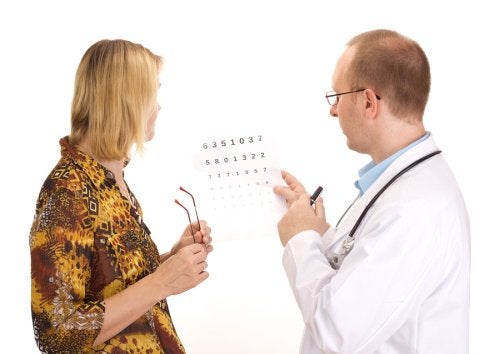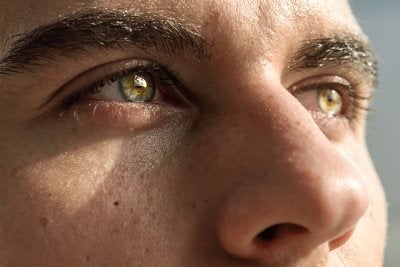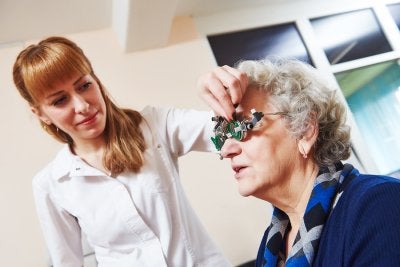-
A Look at the Different Types of Intraocular Lenses
Intraocular implants may be appropriate for some patients with cataracts or presbyopia. When you visit an optical center in Chicago to discuss having this type of eye surgery , the ophthalmologist will explain the different types of intraocular lenses (IOLs) that are available. One popular option is the monofocal lens, which is designed to provide optimal vision at near, intermediate, or far distances. If your monofocal lens is set for near distance, then you would need eye glasses to see at far distances. Another option is to set one lens for near and another for far distances. This is known as monovision and it provides vision at intermediate distances.
Alternatively, your ophthalmologist might recommend that you have multifocal or accommodative lenses. This is a newer type of IOLs that may reduce your dependence on glasses and contact lenses. A multifocal lens features a series of different focal zones, which can allow for both near and far distance vision.

-
What Glaucoma Does to the Eyes
If your ophthalmologist near Chicago has diagnosed you with glaucoma , you may be wondering about the nature of this condition and how it will affect your vision and eye care. Different patients can experience glaucoma in different ways. In most cases, this disease affects peripheral vision first. As glaucoma progresses, it can cause you to experience tunnel vision as your peripheral vision continues to deteriorate. While some people maintain their central vision, this can also be damaged by glaucoma.
Eye doctors aren’t certain about why glaucoma causes damage to the optic nerve but for many patients, an increase in pressure in the eye seems to be involved. Your eyes produce a watery fluid called aqueous humor that, in healthy eyes, drains out and into the bloodstream. Because of a malfunctioning drainage system, the fluid fails to drain properly in some individuals, resulting in an increase of pressure in the eye. Some ophthalmologists believe that this condition may be the cause of the optic nerve damage and resulting vision loss that occurs in glaucoma patients.

-
Protecting Your Eyes from Fireworks
Fireworks are an iconic part of summer. Unfortunately, fireworks are as dangerous as they are beautiful. Every year, thousands of patients are seen in emergency rooms across the country because of injuries caused by fireworks. Often, these injuries involve the face. Because eye injuries, other catastrophic injuries, and death can occur from the misuse of fireworks, June has been declared National Fireworks Safety Month. This awareness month, which actually runs through the Fourth of July, was designed to help consumers prevent fireworks injuries. If you plan to ignite fireworks this summer and live in Chicago, follow some basic eye care tips. An ophthalmologist at your local ophthalmology practice can work wonders with modern medical technology, but eye injuries caused by fireworks can cause permanent damage and vision loss.

Reconsidering the Use of Fireworks at Home
The only safe way to enjoy fireworks is to view a show put together by professionals. Enjoy the fireworks display from behind the safety barriers at a distance of at least 500 feet.
Using Appropriate Safety Gear
If you do plan to use fireworks at home, check your local laws first to be sure they are legal in your area. Then, purchase safety glasses for everyone who will be handling the fireworks. Your ophthalmologist can recommend an approved type of safety glasses. Keep a bucket of water nearby and have access to a garden hose.
Igniting Fireworks as Safely as Possible
Never allow children to ignite, handle, or come near fireworks. This includes sparklers, which can burn at about 2,000 degrees Fahrenheit. This temperature is hot enough to melt certain metals. When an adult is ready to light the fuse, he or she should avoid placing any part of the body over the fireworks device. Instead, the adult should hold the lighter out at arm’s length away from the body to light the device. Immediately upon ignition, the adult should back away quickly. Alcohol should never be consumed before or during the handling of fireworks. Furthermore, adults should never attempt to re-light a “dud” firework. Instead, wait 20 minutes and then soak it in water.
-
Protecting Your Eyes During Sports
If you play sports regularly, you should ask an ophthalmologist near Chicago for tips on preventative eye care and protective eyewear. Opticians recommend that you wear protective eyewear during sports in order to reduce your risk of serious eye injury or damage. Here is a look at how eye doctors recommend you protect your eyes while playing high-risk, moderate-risk, and low-risk sports.

Eye Protection for High-Risk Sports
If you regularly play high-risk sports, your ophthalmologist will recommend that protective eyewear become a regular part of your eye care routine. Eye protection is particularly necessary if you wear contact lenses, as they put you at higher risk for eye injury and damage. High-risk sports include paintball, basketball, racquetball, softball, and football. These sports are high-risk because they involve swinging bats, fast moving balls, and heavy contact. You’re much more likely to need to visit an eye doctor for emergency eye care if you don’t wear protective eye wear while playing high-risk sports.
Eye Protection for Moderate-Risk Sports
Moderate-risk sports include golf, tennis, and soccer. While these sports still carry the risk of eye injury due to fast moving balls and swinging clubs and racquets, they are lower contact sports. Your eye doctor or ophthalmologist can recommend eyewear that will fully protect you from injury. It’s important to remember that wearing eyeglasses or sunglasses does not provide adequate protection from trauma, and the wrong eyewear might actually make an injury worse. You should visit your local optical center to discuss the most appropriate forms of protective eyewear for your sport.
Eye Protection for Low-Risk Sports
While low-risk sports are much less dangerous, they still care a risk of eye injury. Your optician can evaluate the level of risk and determine what form of protective eyeglasses you will need. Low-risk sports include swimming and cycling. You might need to wear protective goggles to eliminate the risk of eye irritation, scratches, and foreign objects becoming caught in your eyes. Again, this is particularly important if you wear contact lenses.
-
How Do Intraocular Lenses Work?
 Intraocular lenses (IOLs), or intraocular implants, are lenses that an ophthalmologist near Chicago can implant in a person’s eyes. Patients with cataracts may be good candidates for IOLs. During cataract surgery , the ophthalmologist removes the cloudy lens of the affected eye and replaces it with the artificial lens to restore proper vision.
Intraocular lenses (IOLs), or intraocular implants, are lenses that an ophthalmologist near Chicago can implant in a person’s eyes. Patients with cataracts may be good candidates for IOLs. During cataract surgery , the ophthalmologist removes the cloudy lens of the affected eye and replaces it with the artificial lens to restore proper vision.Function of IOLs
Cataracts are areas of the eye’s natural lens that become cloudy and obscure vision. They are quite common among older adults. Since a cataract is not a growth that can be removed, it is necessary to remove the entire lens of the eye. The artificial IOLs that are inserted in place of the natural lens work in the same way. Light enters the eye through the cornea. The lens focuses the light on the retina, which allows the optic nerve to carry the images to the brain. Unlike the eye’s natural lens; however, IOLs are customizable. Before the ophthalmologist performs the eye surgery, he or she determines the appropriate prescription of IOL for the individual patient.
Candidates for IOLs
Only an ophthalmologist can determine if someone is a good candidate for cataract surgery. Since cataracts can develop for many years without causing any symptoms, most people will not necessarily have to have the surgery right away. Generally, cataract surgery may be recommended for patients who are over the age of 40 and who are experiencing poor night vision, sensitivity to light, blurry vision, or other visual disturbances.
Procedure for IOL Placement
About a week before the surgery is scheduled, the ophthalmologist will perform a non-invasive test to measure the size and shape of the eye. He or she uses this information to select the right IOL for the patient. The patient may be asked to stop taking certain medications for a week prior to the procedure. Antibiotic eye drops may also be applied for a few days to reduce the chances of an infection. The surgery itself typically takes an hour or less to perform. The ophthalmologist will place eye drops to dilate the eyes and then apply a local anesthetic. Then, the ophthalmologist can remove the cloudy lens using an ultrasound probe to break it up. Finally, the eye doctor places the IOL into the lens capsule.
-
A Look at Intraocular Lens Treatment Options
Patients undergoing cataract surgery have more options available to them than ever before. During cataract surgery, the natural lens of the eye is removed. Then, the eye doctor places a permanent lens implant. This is known as an intraocular lens (IOL). You can talk to an eye doctor in Chicago and watch this video to learn about the different types of IOL implants that are available .
For example, one option for cataract treatment is to have a monofocal IOL. This lens enables patients to have corrected vision at far, intermediate, or near distances. A newer type of IOL implant is the multifocal lens, which can accommodate both near and far corrected vision. There are also IOL options that are designed specifically for individuals with astigmatism.
